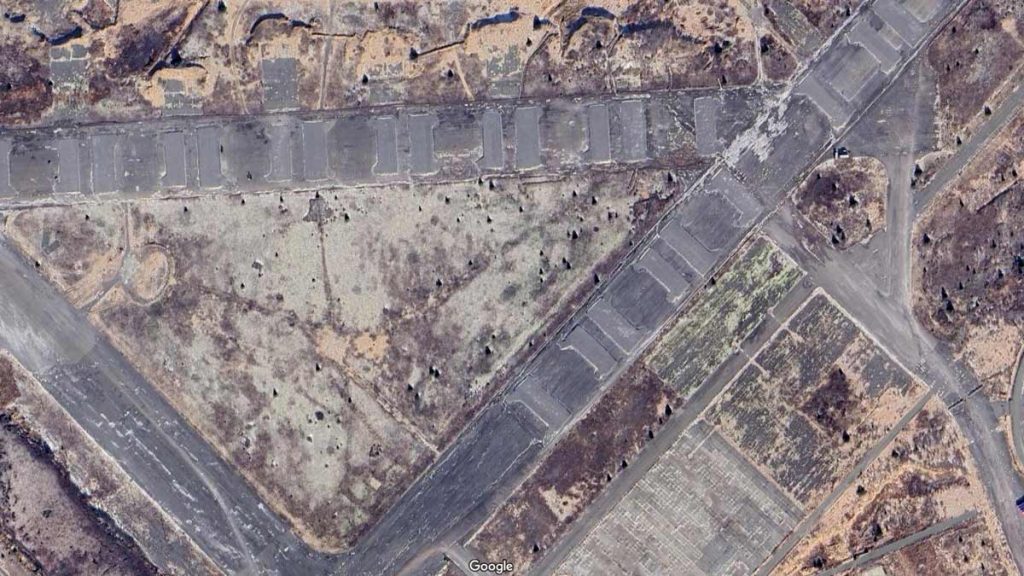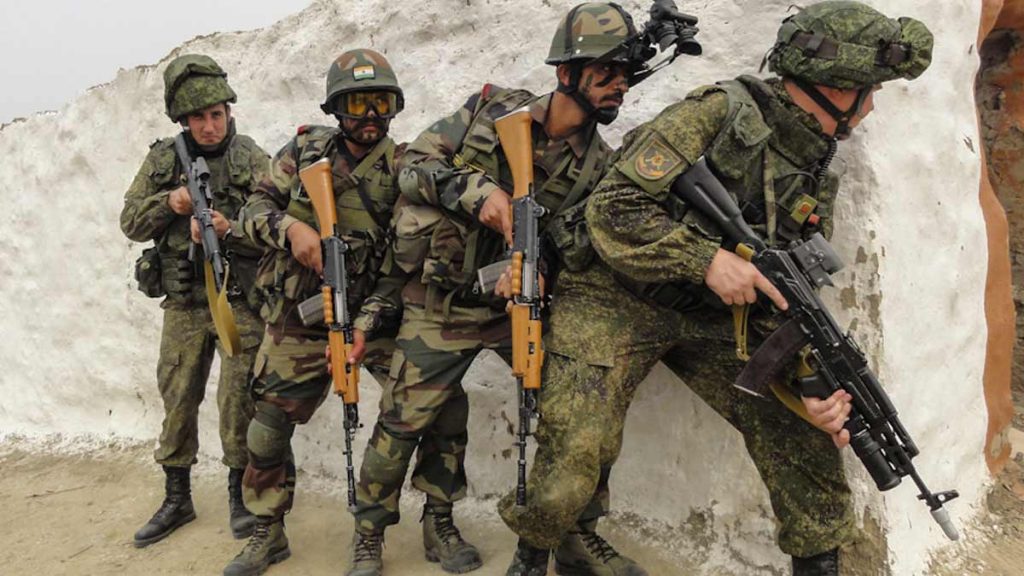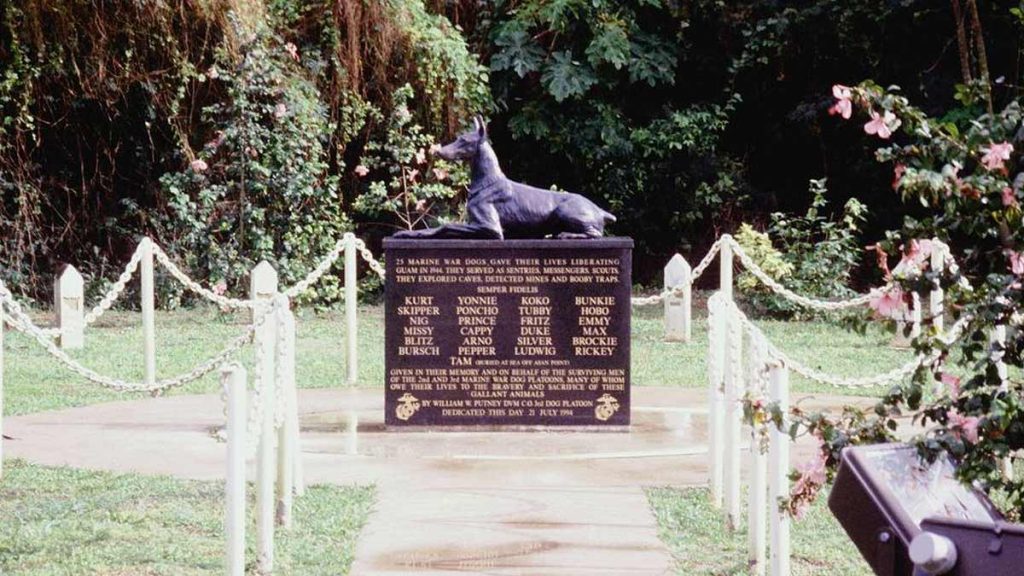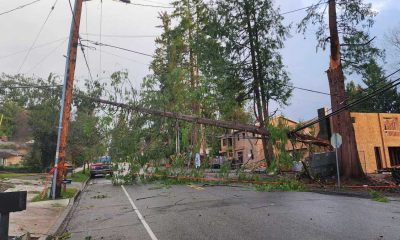National
A study claimed the U.S. has 740 military bases around the world, that isn’t true
A report claimed the United States has 740 military sites around the world. An analysis found the number is closer to 375.

An analysis of the 2021 report from the Quincy Institute that has been used to claim the United States maintains almost 750 military bases around the world was found to have significant flaws. In 2020, David Vine, a Professor of Anthropology at American University, made headlines after publishing books, a report, and shared data claiming the U.S. has almost 800 military bases in over 80 countries around the world. The data was updated in 2021 after the U.S. withdrawal from Afghanistan, with the count dropping to 740. Numerous news organizations continue to run stories based on the report, which has been used as a rallying cry against U.S. imperialism.
A review of Vine’s data found significant problems that go beyond the passage of time, which has seen some bases open and other bases close, and new data that answered questions about some facilities. Addressing many issues with the data and methodology, the list shrinks to 166 base sites and 51 lily pads that can be absolutely confirmed for a total of 217 military facilities. If you include the eight verified sites on U.S. territorial soil, which the Department of Defense counts as overseas bases, the count climbs to 225.
If you include another 150 unidentified lily pad sites that did not include any sourcing information in Vine’s data, the figure climbs to 375. That’s still just over half of the 740 sites claimed by the 2021 Quincy Institute study.
The data from Vine’s research is publicly available from the American University website and includes the definition of what a “base site” and “lily pad” is. Vine explained how he and his team created their methodology, writing, “Using the Pentagon’s term ‘base site’ means that, in some cases, an installation generally referred to as a single base—such as Aviano Air Base in Italy—actually consists of multiple base sites—in Aviano’s case, at least eight. Counting each base site makes sense because sites with the same name are often in geographically disparate locations.”
It is important to note that the initial research is four years old and could not have accounted for the closure of the eight U.S. base sites in Afghanistan in 2021, the withdrawal from Mali, the ongoing U.S. withdrawal from Niger, or the recently announced ending of the joint training mission at the Krtsanisi National Training Centre in Georgia.
How Did We Reach Our Conclusion
Using Vine’s publicly available data, we conducted an audit of his list. We realigned his methodology of counting individual facilities within a host nation base or community as unique base sites or lily pads by applying the methodology evenly. Reviewing geolocation information and publicly available addresses, if individually counted base sites were found to be in the same building or adjacent buildings, they were combined into an individual site.
Additionally, a small number of errors were identified, resulting in a reduction in the number of lily pad sites. Civilian support facilities for dependent family members, such as AAFES stores, base housing, and non-military primary schools, were removed from the count. A small number of lily pad sites that additional research discovered were leased storage space within civilian facilities, such as fuel storage at several locations, were also removed. Unmanned base sites, such as the radio transmitter at Grindavik, Greenland (part of Denmark), remained in the count.
Vine’s Research Used Inconsistent Methodology for Duplicate Base Sites and Lily Pads
A significant problem is Vine and his team didn’t consistently adhere to their methodology. In some cases, facilities in the same building were counted as individual base sites or lily pads. Others, such as Diego Garcia, located in British Indian Ocean Territory, were counted as a single base. Addressing Diego Garcia, Vine wrote in his notes, “Could be considered 2 bases because Air Force and Navy.”
For some locations, the data for a base site included the latitude and longitude to the fifth decimal, enabling geolocation by satellite imagery, and was further confirmed using publicly available physical addresses. In another example, Incirlik Air Base in Adana, Türkiye, was counted twice, once as a base site and once as a lily pad, with no distinction between the two in the description or notes and no sourcing information provided.
Address searches, satellite imagery, and public information available through the U.S. Department of Defense identified 138 locations counted as unique sites that did not adhere to Vine’s criteria. When condensing the list, if a base site and lily pad overlapped, we adjusted the count to leave the base site because, by definition, they are more likely capable of supporting combat operations.
Leased Civilian Infrastructure Counted as Base Sites and Lily Pads
Several lily pad sites in Vine’s data are leased commercial fuel storage facilities to support potential military operations. For example, the base site in Takoradi, Ghana, is a non-military port infrastructure tank farm, which by the Department of Defense definition, should have been counted as a lily pad. Demonstrating other inconsistencies, leased fuel storage tanks at civilian locations in Cote D’Ivoire and Botswana were counted as lily pads.
According to the data, a small number of sites are warehouses where humanitarian aid and disaster relief equipment and supplies are forward deployed, including one at Cesar Basa in the Philippines, which includes the note that it is “to be built.”
Sites Where There are Agreements for Military Access During Certain Conditions, Counted as Active Bases
At least 24 bases on the list are locations where the U.S. has a permanent presence but aren’t run by the DoD. Some have a major presence, like bases in Germany, the U.K., and Italy, while others only host small forces for short periods, once a year or less – or possibly never. One example is Queen Beatrix International Airport in Aruba. As the southern Caribbean island’s only airport, it can support military aircraft. Aruba is part of the Netherlands, which is a NATO Alliance member. Vine notes that the airfield could accommodate up to eight U.S. aircraft if a theoretical cooperative security request were made. In his data, Queen Beatrix Airport was counted as an active lily pad.
Another location counted as a lily pad is Shannon Airport in Ireland. It can support refueling and act as an alternative landing site for U.S. military aircraft, but like Aruba, it does not have a full-time military presence.
Muscat International Airport in Oman was counted as a base site, citing the American Security Project. However, the report only states that it is “usable under the Facilities Access Agreement” and that military material is forward deployed. That would be defined as a lily pad.
Other airports with similar agreements include Comalapa International Airport in El Salvador and the airfield on the Galapagos Islands controlled by Ecuador.
Civilian Housing, Hospitals, Shopping Malls, and Children’s Schools Counted as Military Bases
A subset of the 740 military base sites listed in Vine’s data included civilian housing, joint military-civilian hospitals, shopping malls, war memorials, recreation centers, and dependent children schools, including,
- The Akasaka Press Center, which houses the offices and print shop of Stars and Stripes in Japan
- American Memorial Park, run by the U.S. National Park Service, on Northern Mariana Island
- The U.S. National War Dog Cemetery and Memorial at Naval Base Guam
- Sungnam Golf Course, Songnam, South Korea
- AAFES Distibution Center in Gruenstadt, Germany
- Okuma Beach and Outdoor Recreation Facility, Japan
- New Sanno Hotel, Tokyo, Japan
- Single-person housing (BAQ) at Aviano Air Force Base (2 locations)
- Dependent family housing at Baumholder Airfield, Germany
- Dependent family housing at Bleidorn, Germany
- Dependent family housing at Boeblingen, Germany
- Dependent family housing at Garmisch, Germany
- Dependent family housing at Moehringen, Stuttgart, Germany
- Dependent family housing at Robinson-Grenadier, Germany
- Dependent family housing at Steuven and Weicht Village, Germany
- Dependent family housing in Wiesbaden, Germany
- Dependent family housing in Vicenza, Italy
- Dependent family housing Ikego at Yokosuka Naval Base Housing, Japan
- Dependent family housing in Hario, Japan
- Dependent family housing at Ikeda-Cho, Japan
- Dependent family housing at RAF Ely, United Kingdom
- Dependent family primary school at NSA Bahrain
- Dependent family primary school at Sterrebeek, Brussels
- Dependent family primary school in Stuttgart, Germany
- Hainerberg Housing and AAFES Shopping Center at Wiesbaden, Germany
- U.S. Naval Hospital at Agana Heights, Guam, which is the only trauma center on the island that provides services for military personnel and civilians
- U.S. Army Hospital at Baumholder, Germany
- Naval Medical Research Center and Infectious Disease Surveillance in Lima, Peru
- A warehouse of medical supplies at the same location in Lima, Peru
- Naval Medical Research Center and Infectious Disease Surveillance in Cairo, Egypt
- Naval Medical Research Center and Infectious Disease Surveillance, Phnom Pehn, Cambodia
- Area II Army Religious Retreat Center in Seoul, South Korea, closed on November 25, 2013
In another irregularity, Vine’s list omitted the Naval Medical Research Center in Tokyo, Japan, which is located at the Hardy Barracks, also not counted, in the same building the Stars and Stripes offices are located.
Known Overseas Military Sites Missing and Closed Bases Counted

Google Maps view of Argentia Naval Air Station, abandoned in 1994 but included in David Vine’s database of active U.S. military base sites
The audit found there were inconsistencies and inaccuracies about U.S. base sites and lily pads in Canada. The database listed “small base sites” but counted them as a single lily pad while listing Argentia, Newfoundland, as hosting an operating U.S. base site. Argentia Naval Air Station and Fort McAndrew were closed in 1994 and satellite images show the airfield is unusable. However, Detachment 2, First Air Force, does maintain approximately 150 active duty airmen at the Canadian military base at North Bay, Ontario. That contingent wasn’t included in Vine’s data despite meeting the criteria as a base site.
Vine’s research omitted other known bases, including the International Center for Peacemaking and Security at Yavoriv Military Base, near Lviv, Ukraine. From 2007 to 2022, that facility was used for joint NATO-Ukraine training, including U.S. military personnel. International operations ended in February 2022 due to Russia’s expanded war of aggression against Ukraine. In his notes, there was a question mark, despite the earlier joint training exercises between the U.S. and Ukraine being readily available public information.
Nine more lily pad sites in Saudi Arabia were included despite the U.S. withdrawal in 2003. Vine’s notes indicate that a “small U.S. contingent remains to train Saudis, [and] keep bases warm, and cites the 2018 American Security Project as the source.
The publicly available American Security Project report didn’t support Vine’s conclusion. It stated, “The U.S. withdrew the vast majority of its forces in 2003, as the invasion of Iraq eliminated the need for a troop presence in Saudi Arabia. Today, many of the American military personnel still in Saudi Arabia are part of the U.S. Military Training Mission and do not provide an operational combat capability. Undoubtedly, USMTM personnel travel and work at different Saudi bases to complete their mission, but the primary ‘basing’ point is Eskan Village near Riyadh.”
Two sites in Ethiopia, at Dire Dawa and Arba Minch, were counted as active lily pad sites despite Vine’s notes indicating they were closed in 2012, and the closures were reconfirmed in 2015 and 2017.
The Chinese-controlled Hong Kong port of Qingdao was also included in Vine’s list despite China denying U.S. Navy access since 2019.
Another questionable claim was Clark Air Force Base listed as a “lily pad” site in the 2020 research, with the source noted as “news reports.” In June 1991, the eruption of Mount Pinatubo buried Clark in a foot of rain-soaked volcanic ash, collapsing hangars and buildings. The U.S. had already committed to leaving the base due to demands by the Marcos regime and completed the withdrawal in early 1992. The Philippines partially repaired the base, which remains under the control of the Philipines government and operates as Clark Freeport Zone and Clark International Airport. As of 2024, multiple news reports indicated that access to the U.S. military is still being discussed.
Non-existent Sites on U.S. Territory Counted as Active
Vine’s count included 36 sites located in U.S. territories, including Puerto Rico, Guam, American Samoa, the U.S. Virgin Islands, North Mariana Island, Wake Island, and Johnston Atoll. Of those, 24 were lily pad sites with no listed information or the data source used.
He wrote in his notes that “bases located in U.S. colonies (‘territories’) [are] in my count of bases abroad because these places lack full democratic incorporation into the United States. The Pentagon also considers these locations ‘overseas.’”

Google Maps view of Johnston Atoll runway and military buildings show the site is abandoned
However, there were other problems. For example, Johnston Atoll was counted as an active lily pad site, despite noting it is uninhabited and the airfield is closed. Satellite images show that the runway is overgrown and in complete disrepair, with almost all buildings on the island completely destroyed.
150 Sites Without Any Source
There were 150 sites counted as lily pads in Germany (40), Greece (1), Italy (14), Japan (33), South Korea (14), Portugal (11), Slovenia (1), Türkiye (3), the United Kingdom (2), and U.S. Territories (24), with no listed information on location, function, or data source. All relevant fields were blank.
Applying Vine’s Criteria to Other Nations Paints a Different Picture
The number of equivalent base sites and lily pads operated at overseas locations by the Russian Federation is commonly reported between 18 and 25. However, that consolidates all locations at the overseas sites, which is a different criterion applied to the U.S. by Vine and the Quincy Institute.
Here are three examples. In the occupied Georgian territory of Abkhazia, Russia’s 7th Military Base is counted as a single site. However, Russia maintains base sites at the Bamboura Airport, Gudauta, Ochamchire, and the Kodori Valley, as well as military-administrative buildings and medical facilities in Skuhumi, Gagra, Gudauta, New Athos, and Eshera. Russia has also started construction of a naval base in occupied Abkhazia.
The Russian presence in the self-declared and unrecognized Moldovian territory of Transnistria is commonly counted as a single base site at the Cobasna Ammunition Depot. However, Russian forces operate 15 military checkpoints, have a permanent presence at Tiraspol Airport, and have administrative offices in Tiraspol.
Russia is commonly credited with having two bases in Belarus, but the Russia-Ukraine War has shown that Russian forces have cooperative agreements providing access to all 17 military bases in the country. The use of all 17 bases by Russian forces at different points in time since 2021 is publicly documented.
When applying Vine’s methodology, one country and two areas under Russian occupation have 45 verifiable base sites.

Russian and Indian troops conducting joint anti-terror military training exercises at the Mahajan Fieldfiring Range in India – Photo Credit – Russian Ministry of Defense
When known cooperative agreements and joint annual military training exercises are included, where Russian troops may have a brief presence at host sites in other nations, Russia’s footprint expands at least to South Africa, China, Cuba, India, Iran, Egypt, Sudan, Eritrea, Mali, Burkina Faso, Niger, the Central African Republic, Venezuela, Nicaragua, and North Korea. As an example, a 2017 agreement signed between Egypt and Russia that went into effect in 2021 gives Russia cooperative access to 20 Egyptian Air Force bases. This is a similar agreement that the United States has in many countries, which Vine counted as active military sites in his books and data.
Not Enough Questions Asked and Unequal Comparisons
When reporting the news, extraordinary claims require a deeper analysis of the supporting evidence when the information is provided. There is still a case that 375 individual military sites are too many, even with the ongoing shift in geopolitics and increasing threats around the globe. The publicly available data didn’t support the claim that there are 740 U.S. military sites in 81 countries, and the repeated lack of a deep analysis was journalistic malfeasance.
Vine’s effort is commendable despite being flawed. It is critical to consider that his main point was identifying Pentagon spending and operations outside of the public eye. Somewhere in the corners of the DoD, something indicates that 150 sites with no public record may exist. On the surface, counting bases on U.S. territory as foreign seems disingenuous, but the Pentagon classifies them as overseas locations.

The Marine Corps War Dog Cemetery and Memorial In Guam, counted as a “base site” by David Vine – Photo Credit Dawn C. Montgomery, U.S. DoD
However, it is critical to expose that his data contains numerous factual errors that go beyond a handful of political gotchas or minor research mistakes. Including military sites that have been closed for years and, in some cases, decades. Counting multiple sites located in the same buildings while counting Diego Garcia as a single site and missing known overseas bases are glaring issues. Including golf courses, AAFES stores, and hotels as “base sites” with no distinction or footnotes is disingenuous. Adding the U.S. National War Dog Cemetery and Memorial at Naval Base Guam as a distinct military base is reprehensible.
Digging deeper into Vine’s notes, humanitarian aid warehouses were clearly questioned, with the thinly veiled suggestion the classification was a cover for something more sinister. Not everything done by the U.S. military is evil. The easiest example is the response to the 2004 Indian Ocean Earthquake and Tsunami, where the Pentagon did not wait for guidance from then-President George W. Bush. By the time the White House acknowledged the disaster, the U.S. Navy was three days into its operational plan. The lessons learned in 2004 resulted in President Barack Obama budgeting for the creation of forward-deployed humanitarian aid warehouses starting in 2010 and expansion of the program in 2012 and 2015.
And while the U.S. Navy was conducting a heroic humanitarian aid effort in southeast Asia through April 2005, U.S. troops were torturing Iraqis at Abu Ghraib. The U.S. military absolutely needs to be held accountable when war crimes are committed, and the American taxpayer deserves to know where their money is going.












